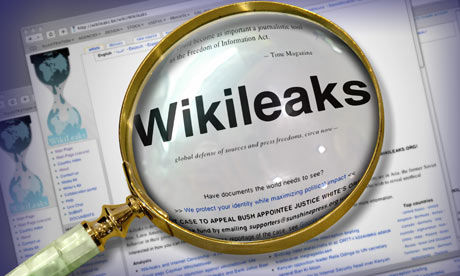The Ecologist Guide to Data Activism
You don't have to be a web geek to join the growing ranks of activists who have told powerful stories using data visualisation. Christine Ottery outlines how you can use data as a powerful tool to press for change
At the time, the government's real time energy data had just been released, allowing ordinary citizens, like Isabell Long, to hold the government accountable to meet its target to slash energy use by 10 per cent.
Emma Mulqueeny, digital media expert and director of hack day events organizers Rewired State, tells me that GovSpark was part of a ‘really effective strategy' to reduce the government's energy use because it showed at a glance how departments were competing. 'We were calling up the press officers from different departments and saying you could do something about what is causing the spikes in energy,' she says.
According to Mulqueeny, 'The government energy and carbon emissions data is still very much an underused resource.' This is because data can differ in file format or even units of measurement from one department to the next, creating a hefty amount of work before it can be compared meaningfully.
Could another reason be technical knowledge barriers? If you want to work at the coalface of data activism the best thing to do it roll your sleeves up and learn a programming language.
Otherwise, there are free programmes that can carry out at least parts of the process - but you might have to rely on developers as well. One example of open source software you can use is the data visualization tool Many Eyes, which can display your data attractively in bubbles, graphs or maps.
Here are some tips that will help you get started, whether you decide to learn to code or not:
Identify sources
Data can be numbers or text. The first thing to do is identify the data sources that you want to analyse or cross-reference. In the UK, public data is released on Data.gov.uk, which is licensed by the National Archives and paid for by UK taxpayers. Other sources could include international governments, quangos or the UN.
It is worth considering making a Freedom of Information (FOI) request if the information you want to use is not already publicly available. You can use WhatDoTheyKnow.com to help you generate emails to the relevant government department's FOI office.
Be careful, however, with commercial data. 'You have to abide by their licensing laws otherwise that's just nicking,' says Mulqueeny. Needless to say, data theft is illegal.
Sometimes you can get permissions to use private data, however. For example, Premasagar Rose, founder of web apps company Dharmafly, created a game called Carbon Copies to raise awareness of carbon footprints with data from Mike Berners-Lee's book ‘How bad are bananas?'. This was as part of a climate hack day run by Rewired State.
Digging for data
When web developers run programming language code to pull data with specific criteria from websites, it is called data scraping, data mining, or data hacking.
ScraperWiki is one platform for scraping data. Developers can write code into ScraperWiki browsers to get started. Those who can't code can use the data from the database, or request new data scrapes. Aine McGuire, director of Scraperwiki, describes ScraperWiki as 'a social network for data prospectors' - there are 1,700 developers in the community and numbers are increasing by 20 per cent each month.
However, be cautious when you are drilling down into cross-referenced geolocation data because you risk identifying individuals, which can have legal ramifications. Mulqueeny recommends consulting a statistician to be on the safe side - contact the Royal Statistical Society to find an expert.

Tell the story
Data visualization can be powerful. David McCandless' graphics and animations, for example, are renowned for their ability to put a perspective on large numbers in comparative datasets.
One of the simplest ways to visualize data is if you have geolocation information. For example, 38 Degrees used a Google map to pinpoint forests endangered under the government's recently proposed (and retracted) sell-off. You can do something similar with Mapalist. Other visualization tools include: Google Charts, Many Eyes, Wordle, Tableau Public and Open Heat Map.
Interactivity is a hot new field, led by Hans Rosling's Gapminder Foundation, which animates global statistics. "Trying to find a way to engage a human with hard data is the challenge," says Rose.
James Darling, a developer at designers Berg London, says, 'Telling stories with the data is the crucial part, and the bit that's often missing is a really good narrative.' He recommends reading Ben Griffiths' history hack blogpost to check out masterful storytelling with statistics.
Also, ‘Journalism in the Age of Data' is a brilliant video on the challenges of telling stories with data.
Learn to code
By now, you might want to learn how to code so you can scrape data and build your own applications and visualisations. But how hard is it to pick up?
'If you have good skills in Excel then it is relatively easy to pick up a computing language like Ruby. You would then be able to take the data out of your spreadsheet and turn that into a mobile application or web application that you can visualize,' says Mulqueeny.
It is time to choose a programming language. Ruby is considered the easiest. Darling says he prefers Ruby because it is more readable as a kind of 'semi-English', which can help you to learn it. Rose, however, calls JavaScript 'liberating' because every browser, mobile phone and increasingly servers are running Javascript.
Mulqueeny says that the best way to learn coding is get a developer to talk you through it. She days: 'There are lots of informal developer's communities who meet in pubs across the UK who welcome newbies, for example Ruby in the Pub. You can find them on Twitter.' Alternatively, Rose recommends starting your own group of nascent data hackers to learn together and collaborate together.
To learn off your own steam, you can try O'Reilly books. Darling suggests: 'Hackety hack is written for children and will teach you the basics in a fun way.'
Christine Ottery is a freelance journalist
From TheEcologist @ http://www.theecologist.org/how_to_make_a_difference/campaigning_the_basics/797245/the_ecologist_guide_to_data_activism.html

Xtra Images - https://blogger.googleusercontent.com/img/b/R29vZ2xl/AVvXsEhD-alw4No6BFijPebzz6VgxXJv6GBymORLVNhGeyHNQTw8EiRRnzNtw6X3crWLh-Jq4GdUhcQyqEdLNbpolNtlrztha0PBVdK98_qXEhaEhiKLHJ1m1xhFSrPOUNN1qPA7tPnBaJY_pyM/s505/WikiLeaks.jpg
http://www.wilsonsalmanac.com/images/non_serviam.jpg
For further enlightenment enter a word or phrase into the search box @ New Illuminati:
or http://newilluminati.blog-city.com (this one only works with Firefox)
And see
The Her(m)etic Hermit - http://hermetic.blog.com
New Illuminati – http://nexusilluminati.blogspot.com
http://newilluminati.blog-city.com (this one only works with Firefox)
New Illuminati on Facebook - http://www.facebook.com/pages/New-Illuminati/320674219559
This material is published under Creative Commons Copyright (unless an individual item is declared otherwise by copyright holder) – reproduction for non-profit use is permitted & encouraged, if you give attribution to the work & author - and please include a (preferably active) link to the original along with this notice. Feel free to make non-commercial hard (printed) or software copies or mirror sites - you never know how long something will stay glued to the web – but remember attribution! If you like what you see, please send a tiny donation or leave a comment – and thanks for reading this far…
From the New Illuminati – http://nexusilluminati.blogspot.com

No comments:
Post a Comment
Add your perspective to the conscious collective